Mar 7, 2023 UPDATE: Here’s the epic Reading Comprehension Strategies PDF files to improve student engagement when reading. Check out the “Say Something” PDF handout and the “Idea Volleyball” activity during BACK TO SCHOOL season to help improve reading skills. Show students how to develop more complex ideas.
Use this Epic Reading Comprehension Strategies PDF list to remind your students that reading is more than just saying the words. Reading is about understanding the text for deeper meaning.
Say Something and Idea Volleyball can be used with any text.
- The Say Something PDF handout goes over six reading strategies and includes sentence stems (what to say) and pro tips (what to do.)
- The Say Something slideshow lesson literally shows students a process to actively engage with the text and say something beyond the obvious.
- Idea Volleyball is a metaphor that allows students to develop more complex ideas when working in small groups.
- The Idea Volleyball PDF handout explains the process, and the slideshow lesson breaks down the reading comprehension process.
Learn more in the Active Reading Strategies Lesson + Handouts POWER UP resource included in this bundle.
There are lots of different Reading Comprehension Strategies PDF we can use to teach students how to understand the text.
There’s more to reading than just saying the words (decoding.)
By explicitly teaching HOW to read (comprehension), we can improve student learning.
Each reading strategy lesson includes
- a video,
- detailed lesson plan,
- slideshow lesson,
- a reading strategy PDF cheat-sheet,
- as well as a generic graphic organizer that you can use with any text.
(Or, you can use the reading comprehension articles provided on this website!)
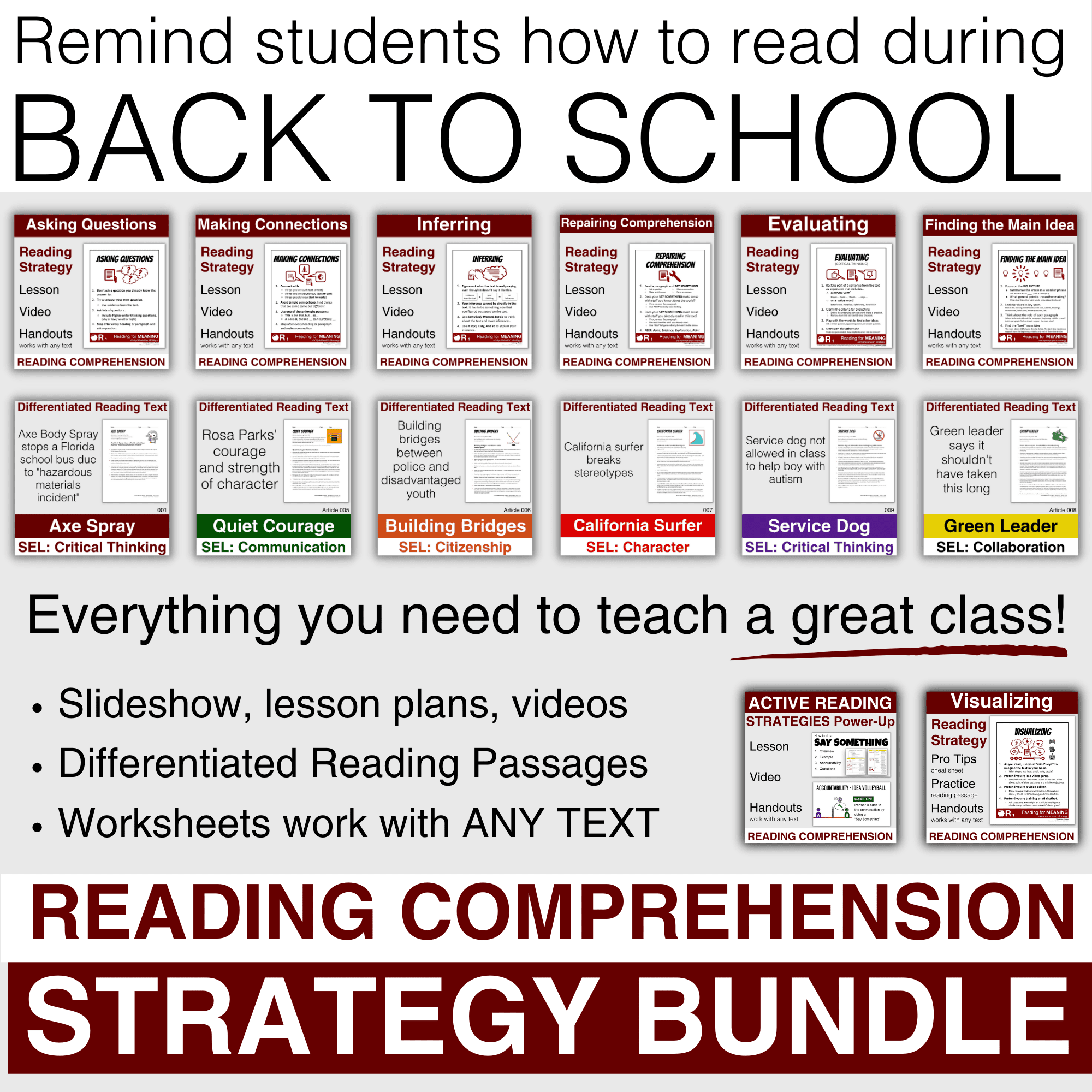
Reading Strategies List
Here are six different Reading Comprehension Strategy PDFs, slideshow lessons, and practice article (differentiated into multiple reading levels):
- Asking Questions
- Making Connections
- Inferring (or Inferencing)
- Evaluating
- Finding the Main Idea
- Repairing Comprehension
Use this Reading Comprehension Strategy Mega Bundle to help students in upper elementary, middle school, and high school.
There’s more to reading than just saying the words. Here’s how to empower students with active reading strategies.
What are Reading Comprehension Strategies PDF?
Reading comprehension strategies are a way of explicitly teaching students HOW to read.
It’s about the reading process and having a growth mindset.
- Some students believe that the world is made up of strong readers and weak readers. And that’s just the way it is.
- Other students believe they’re either good at math or they’re not. That’s life!
- Some people believe you can be a natural-born athlete, but that’s not me! I’m just not good at sports!
- Finally, lots of us think you’re either good at art or you’re not. I’m just not creative.
Growth Mindset research shows us that we can choose to improve. We can learn from mistakes, apply specific strategies, pay attention to results, and try new things. Eventually, if we keep at it, we can improve.
By explicitly showing students what STRONG READERS DO, we can help students to apply “tricks” to crack the code of reading.
What are the different types of Reading Strategies?
There are two types of reading strategies:
- Decoding strategies (how to say the words)
- Comprehension strategies (reading for meaning)
This page goes over Reading Comprehension Strategies (PDF)
Reading Comprehension Strategies List
By the way, these one-page handouts are perfect for reviewing Reading Comprehension Strategies – High School, Middle School, or Upper Elementary. (PDF)
- Each handout goes over FOUR PRO TIPS to help students actively engage with the text.
- The Active Reading Strategies booster lesson has a quick reference PDF handout that summarizes the Reading Comprehension Strategies.
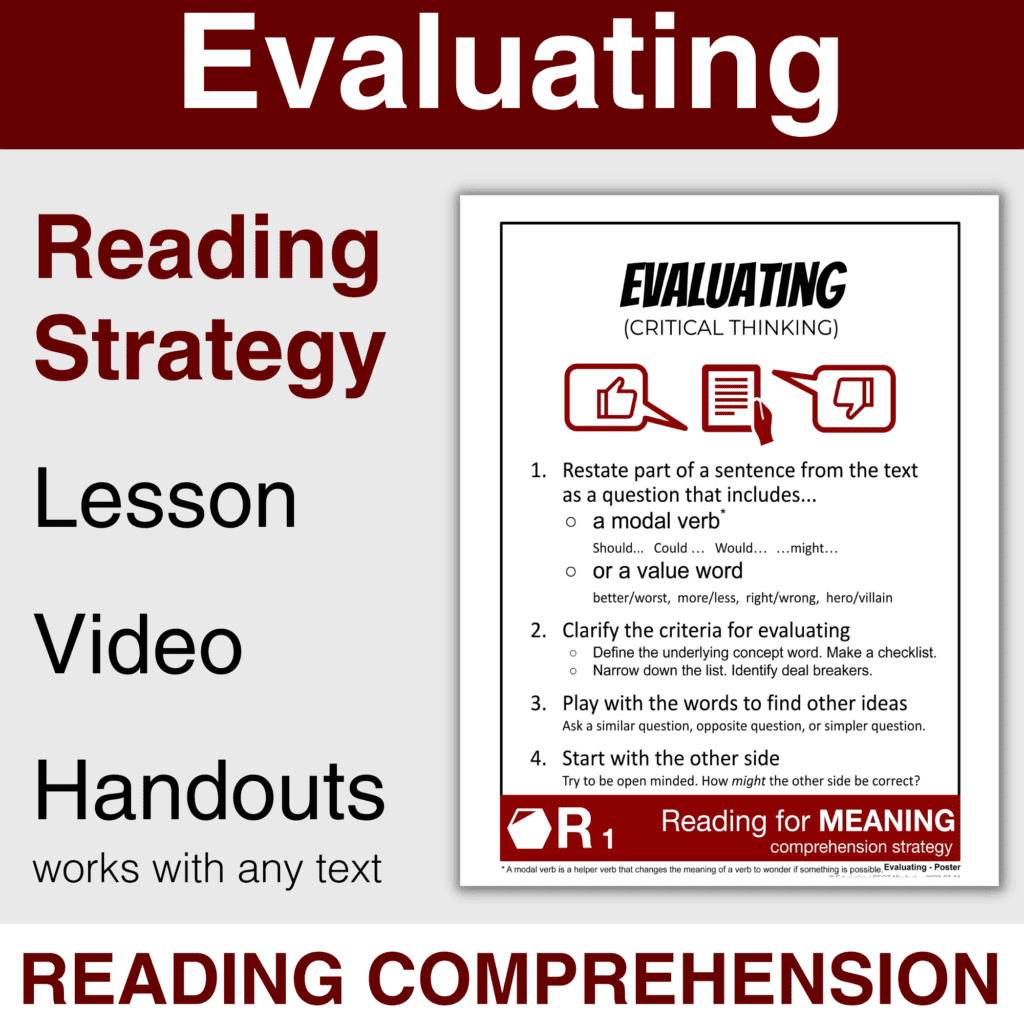
Evaluating Reading Strategy Lesson Plan
Teach students CRITICAL THINKING strategies to help students EVALUATE ideas when reading.
Evaluating is more than just forming an opinion. It’s about making an informed opinion or decision.
Use this lesson to give students a process to help them think critically about the information they read.
4 PRO TIPS to use the Evaluating Reading Strategy:
1. Restate part of a sentence from the text as a question that includes… a modal verb (Should… Could … Would… …might…) or a value word (better/worst, more/less, etc…)
2. Clarify the criteria for evaluating. Define the underlying concept word. Make a checklist. Narrow down the list. Identify deal breakers.
3. Play with the words to find other ideas. Ask a similar question, opposite question, or simpler question.
4. Start with the other side. Try to be open-minded. How might the other side be correct?
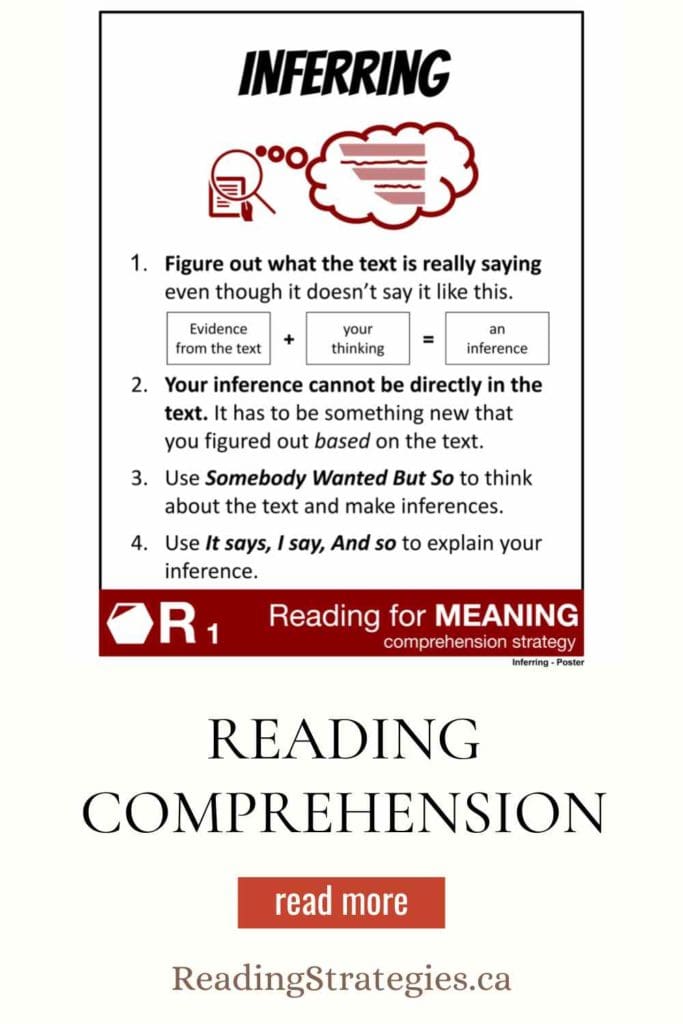
Inferring Reading Strategy Lesson Plan (Inferencing)
Inferring is more than simply reading between the lines.
Use this lesson to help students develop stronger inferences by showing them HOW to come up with an inference, and HOW to check their inference to make it stronger.
How to Infer – 4 PRO TIPS
1. Figure out what the text is really saying even though it doesn’t say it like this. (Evidence from the Text + Your Thinking = an Inference)
2. Your inference cannot be directly in the text. It has to be something new that you figured out based on the text.
3. Use Somebody Wanted But So to think about the text and make inferences.
4. Use It says, I say, And so to explain your inference.
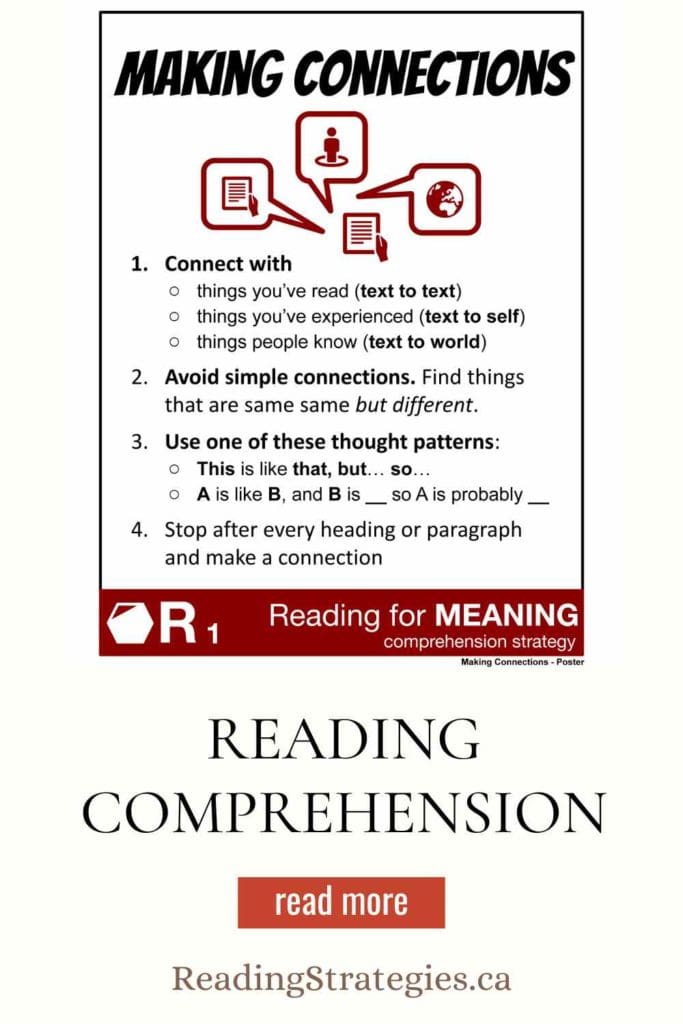
Making Connections Reading Strategy Lesson Plan: How to make deeper Text-to-Self, Text-to-Text, and Text-to-World connections
Making Connections is more than simply finding something that the text reminds you of.
Use this lesson to help your students develop deeper connections instead of thin connections like “this book has a dog and I have a dog…”
How to Make (Deeper) Connections – 4 PRO TIPS:
1. Connect with things you’ve read (text to text), things you’ve experienced (text to self), or things people know (text to world)
2. Avoid simple connections. Find things that are same-same but different.
3. Use one of these thought patterns: “This is like that, but… so…” or “A is like B, and B is _ so A is probably _”
4. Stop after every heading or paragraph and make a connection
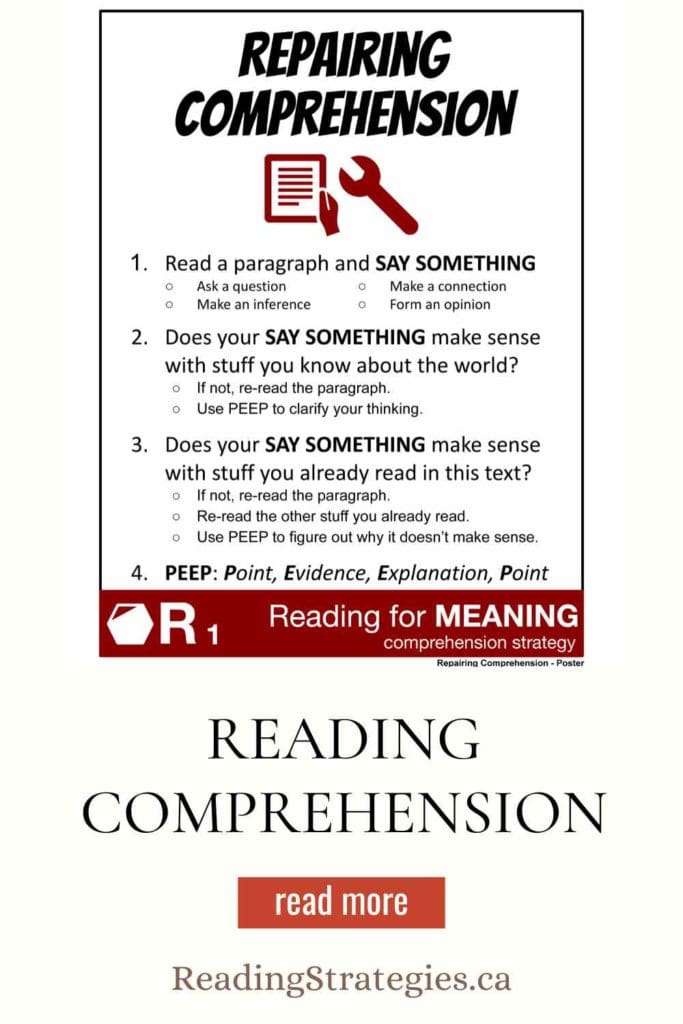
Repairing Comprehension Reading Strategy Lesson Plan
Teach students HOW to monitor understanding and clarify thinking when reading.
There’s more to figuring out what’s going on in a text than just simply re-reading.
4 PRO TIPS: How to Monitor and Repair Comprehension
1. Read a paragraph and SAY SOMETHING: Ask a question, Make a connection, Make an inference, Form an opinion
2. Does your SAY SOMETHING make sense with stuff you know about the world? If not, re-read the paragraph. Use PEEP to clarify your thinking.
3. Does your SAY SOMETHING make sense with stuff you already read in this text? If not, re-read the paragraph. Re-read the other stuff you already read.Use PEEP to figure out why it doesn’t make sense.
4. Use PEEP: Point, Evidence, Explanation, Point
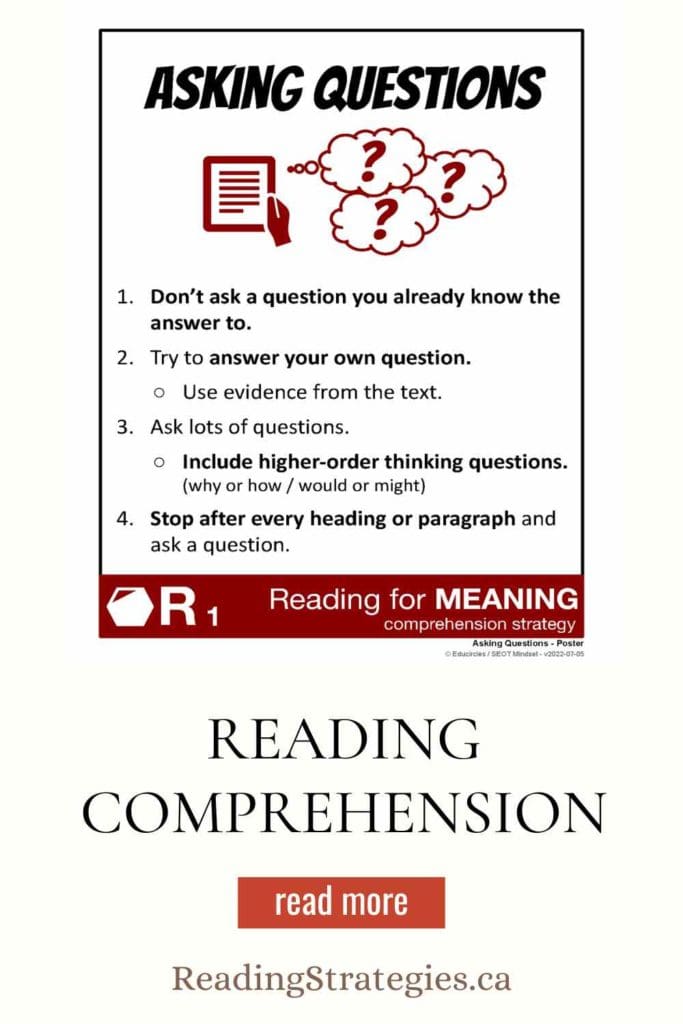
Asking Questions Reading Strategy
Teach 4 PRO TIPS to help students ask the BEST questions when reading to improve comprehension.
High-interest video / slideshow lesson – perfect for your next English Language Arts class.
Students learn how to ask better questions, so they stay engaged while they read.
Active reading strategies can show students how to gain a deeper understanding of the text they’re reading.
How to Ask (Better) Questions – 4 PRO TIPS
1. Don’t ask a question you already know the answer to.
2. Try to answer your own question. Use evidence from the text.
3. Ask lots of questions. Include higher-order thinking questions (why or how / would or might)
4. Stop after every heading or paragraph and ask a question.
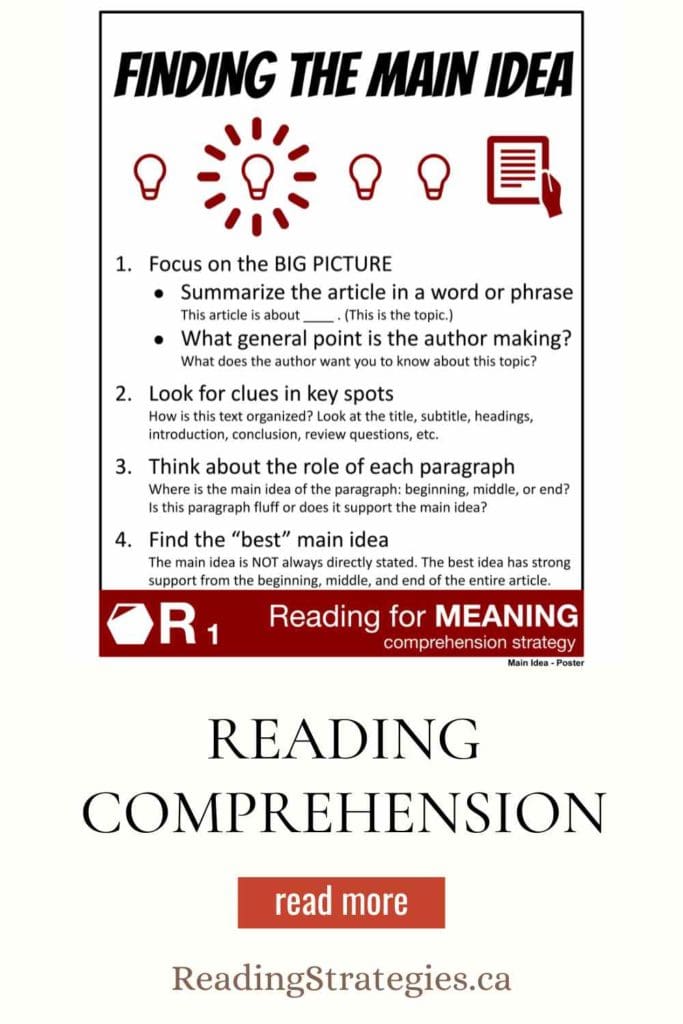
Finding the Main Idea – Reading Comprehension Strategy Lesson Plan
Finding the Main Idea is more than just figuring out what general point the author is trying to make.
It’s about recognizing that we can come up with several main ideas, but the “best” main idea has strong support from the entire article.
How to EVALUATE and FIND THE BEST MAIN IDEA (4 PRO TIPS):
1. Focus on the BIG PICTURE (the entire article). Summarize the entire article in a word or phrase. What general point is the author trying to make?
2. Look for clues in key spots. (How is the text organized?)
3. Think about each paragraph. What is this paragraph about? (Where is the main idea in the paragraph? Beginning? Middle? End?) What role does this paragraph play?
4. Find the “best” main idea. The main idea is NOT always directly stated. The best idea has strong support from the beginning, middle, and end of the entire article.
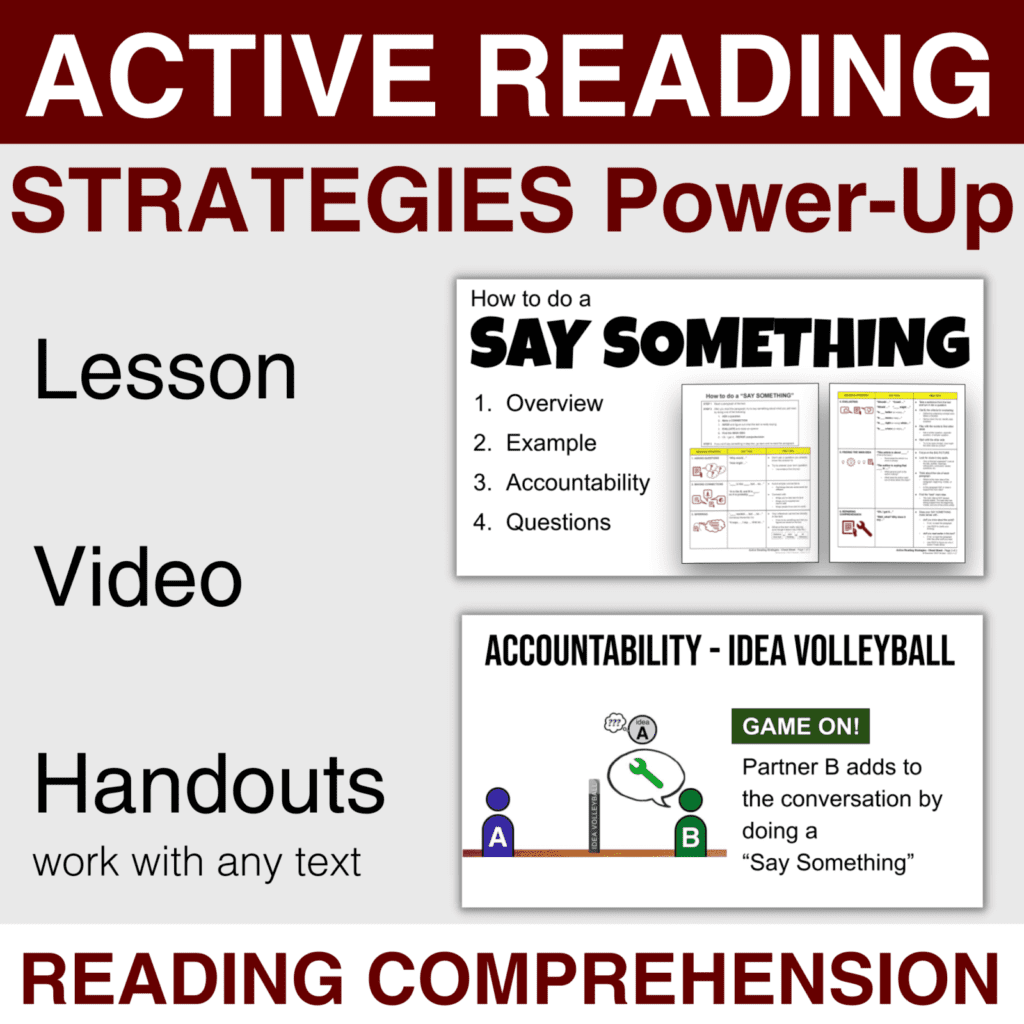
Active Reading Strategies Lesson – Power Up Tool Kit
The Active Reading Strategies Lesson includes strategies and handouts that work with any text! UPDATE: Dec 19, 2022 Improve reading comprehension with just the click of a button! (No, obviously not. But, Evaluating is one of the reading strategies explored in the “Say Something” handout.) FREE until Dec 19, 2022 at 11:59 PM Part 1….